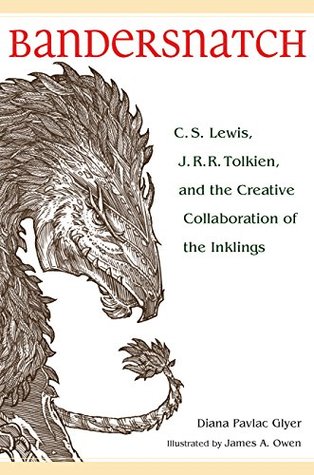More on this book
Community
Kindle Notes & Highlights
Started reading
April 8, 2019
there is a wholly different kind of collaboration, where, in effect, the playwright walks upon the stage and becomes a character in the drama. The Inklings loved to collaborate this way; as poets, scholars, and storytellers, they wrote about each other all the time.
Biographia Theologia
Very interesting. Of course I pick up the theme of John’s Gospel’s prologue and also the fact of the unappreciated philosopher and Louis, who is probably much too spiritual for those of his day and those of our day. That’s a bit over the top and hints that’s sacrilege but I guess not
“clerihews,” nonsense poems made of two rhyming couplets, having a total of four lines that are unequal in length.
“Mythopoeia” was inspired by the 19 September 1931 conversation in which Tolkien and Dyson convinced Lewis that the Christian story is a myth that “really happened.” Tolkien uses this poem to describe many of the specific themes they discussed that evening. He uses many of the exact same phrases as well. This conversation changed the course of Lewis’s life. It also clarified and solidified Tolkien’s concept of sub-creation, his conviction that human creativity is a reflection of the Divine. This poem contains his most eloquent expression of this concept:
man, sub-creator, the refracted light through whom is splintered from a single White to many hues, and endlessly combined in living shapes that move from mind to mind. Though all the crannies of the world we filled with elves and goblins, though we dared to build gods and their houses out of dark and light, and sow the seed of dragons, ’twas our right (used to misused). The right has not decayed. We make still by the law in which we’re made.
Blessed are the men of Noah’s race that build their little arks, though frail and poorly filled, and steer through winds contrary towards a wraith, a rumour of a harbour guessed by faith.
Tolkien confesses he simply “cannot grasp.”
For the first time I think that poetry, especially about the ethereal, ephemeral and the spiritual, is not to be Grasped. Rather, all we can hope for is to see it out of the corner of our eye as it slips by. In fact I got that thought from one of the inklings I think
Tolkien’s conclusion returns our attention to his intended purpose: to affirm Williams as a gifted writer, to acknowledge his important place in their circle, and to pledge his personal commitment to supporting Williams’s work.
I don’t know if it’s a cultural thing or a part of their tiny culture, but no one I mean no one is ever this artist nowadays. Either we critique and write off or we fake complete abeyance Which is very unreal. Folks just can’t hold it together in deep relationships these days. I’ve looked I’ve tried I’ve prayed and I can find no one like these guys. Surprise me Lord
Tolkien also appreciated the dynamic interplay between life and art, fact and fiction. He captures something of C. S. Lewis in The Lord of the Rings. The character Treebeard makes an unusual “Hrum, Hroom” sound when he speaks. This was Tolkien’s attempt to capture the “booming voice” of Lewis. The identification of Lewis with this wise and ancient tree-man should be seen as high praise, indeed, for Tolkien’s love for trees is evident throughout his writing.
Parallels exist, too, between Tolkien and Niggle, the main character in his short story “Leaf by Niggle.” Tolkien explains that this story arose from his preoccupation with The Lord of the Rings, and his fear that the long epic would never be finished. Tolkien was struggling and anxious about his book, and one day he “woke up with a short story in his head.” He wrote it down quickly, with unusual ease. Describing Niggle’s work as a painter, and his own writing process as well, Tolkien
There are many parallels between the fantastic roots and strange birds of Niggle’s painting and the characters and mythologies of Tolkien’s Middle-earth. The impulse for the story was Tolkien’s anxiety; the setting of the story was Tolkien’s neighborhood. He explains that one of his sources was a large poplar tree he could see from his bedroom window.


